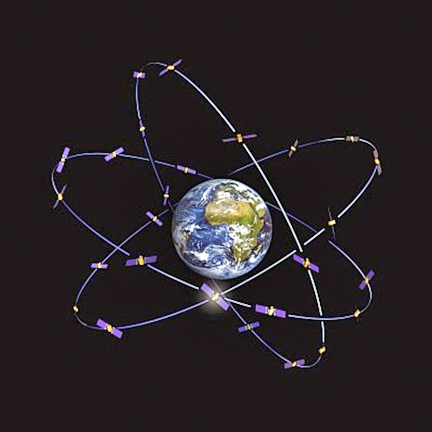
Project Galileo, a joint initiative of the EU and European Space Agency (ESA), has gone live, with global connectivity supplier HUBER+SUHNER on-board.
The Switzerland-based company is supplying radio frequency components to the project and, following an extensive testing period and 17 years of development, the Galileo system went live last week with the aim to supply the world’s most accurate satellite navigation technology. Galileo provides better positioning navigation, unique accuracy, and faster detection of emergency beacon signals, helping rescue teams when every minute matters. Users around the world can now access a highly accurate, guaranteed global positioning service under civilian control.

Artistic rendition of the Galileo constellation.
HUBER+SUHNER currently supplies more than 4,500 radio frequency components to Thales Alenia Space in Italy for a number of the Galileo satellites, which use HUBER+SUHNER adapters to connect the antennas to the active satellite components. The adapters have an MMBX standard connector at one end and a special HUBER+SUHNER customization for direct soldering onto the antenna at the other end. With 18 Galileo satellites in orbit and the supporting ground infrastructure, Galileo is now available for use by public authorities, businesses and citizens. The project is also mutually compatible with American GPS and the Russian Glonass navigation system.
HUBER+SUHNER is providing connectors that are capable of transferring the highest power level required. Once installed and in space, the antennas, equipped with HUBER+SUHNER adapters, send position data to Earth that is then used to pinpoint the location of individuals or objects.
The first services to be offered by Galileo include the Open Service, the Public Regulated Service and the Search and Rescue Service. The Open Service is a free mass-market service that can be used by Galileo-enabled chipsets in smartphones or in-car navigation systems. The Search and Rescue Service is Europe’s contribution to an international emergency beacon locating system that can help to rescue people in distress. The Public Regulated Service is fully robust and encrypted to provide service continuity for government users during national emergencies or crisis situations.
“The ever-growing importance and dependence of satellite navigation applications for both businesses and European citizens makes the potential disruption of a satellite navigation service unacceptable,” said Patric Keller, Aerospace+Defense Market Unit Manager at HUBER+SUHNER. “To ensure that all components could withstand the harsh environment of space, they had to pass a wide variety of vibration, tensile and temperature tests. We subjected adapters to temperature cycles ranging from -120°C up to +120°C over several months to ensure the required performance level could be achieved. ESA’s endorsement of HUBER+SUHNER is a clear demonstration of the company’s quality development and manufacturing process.”

